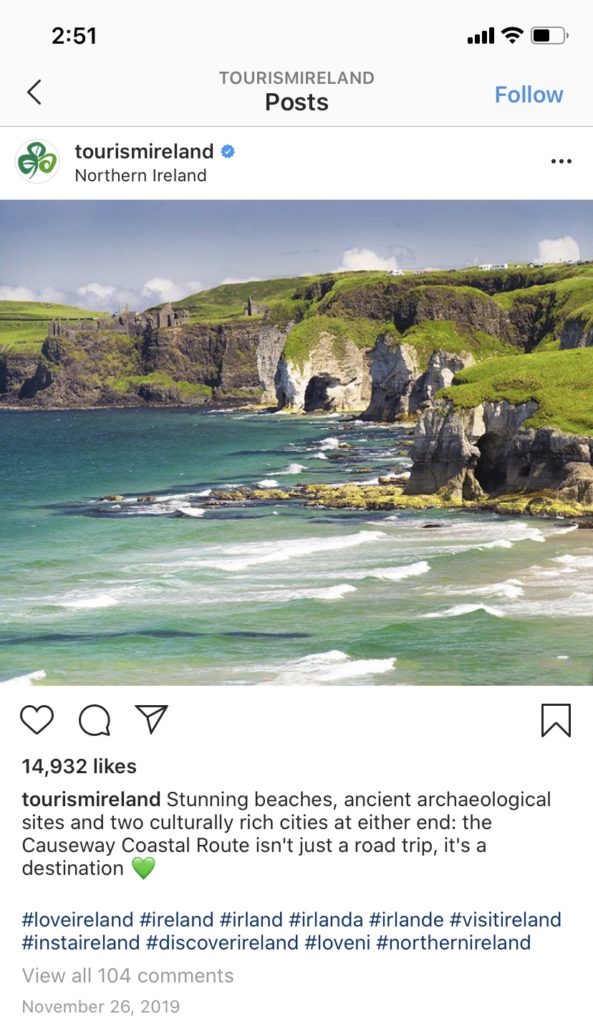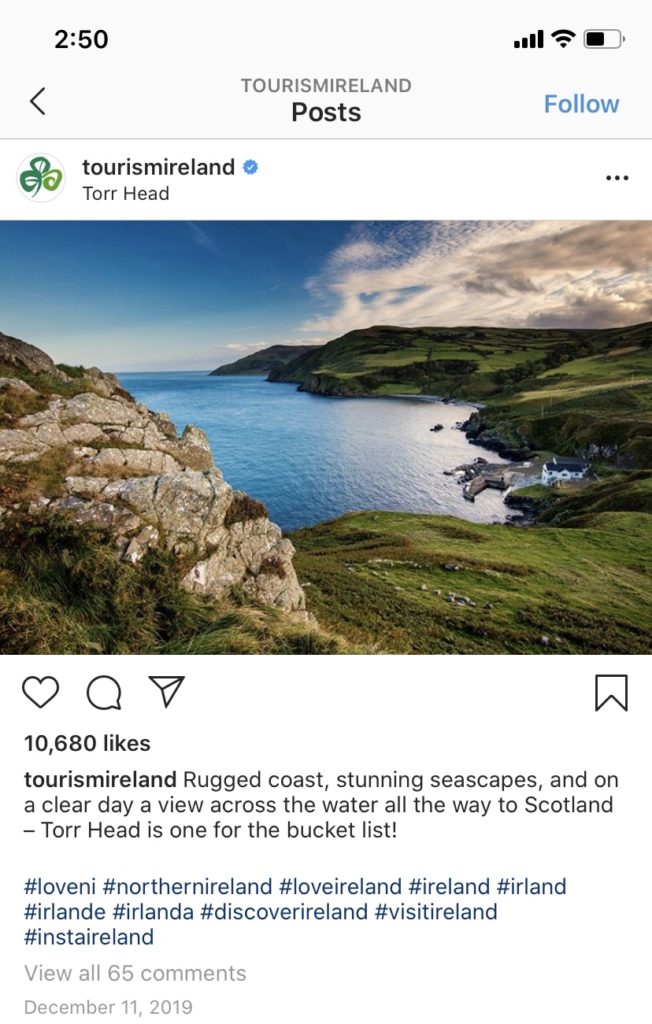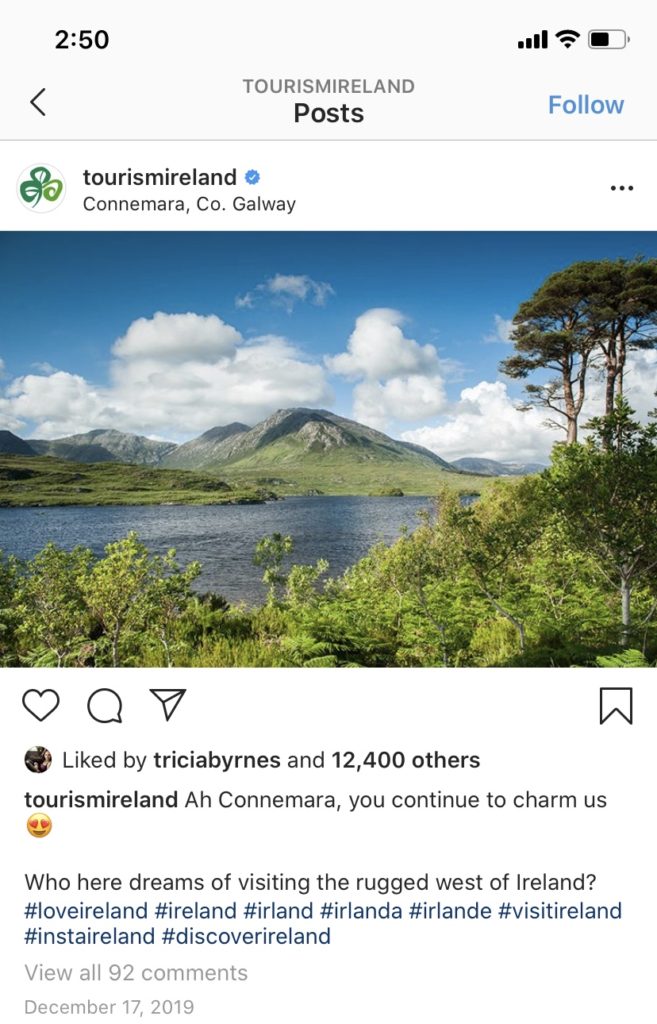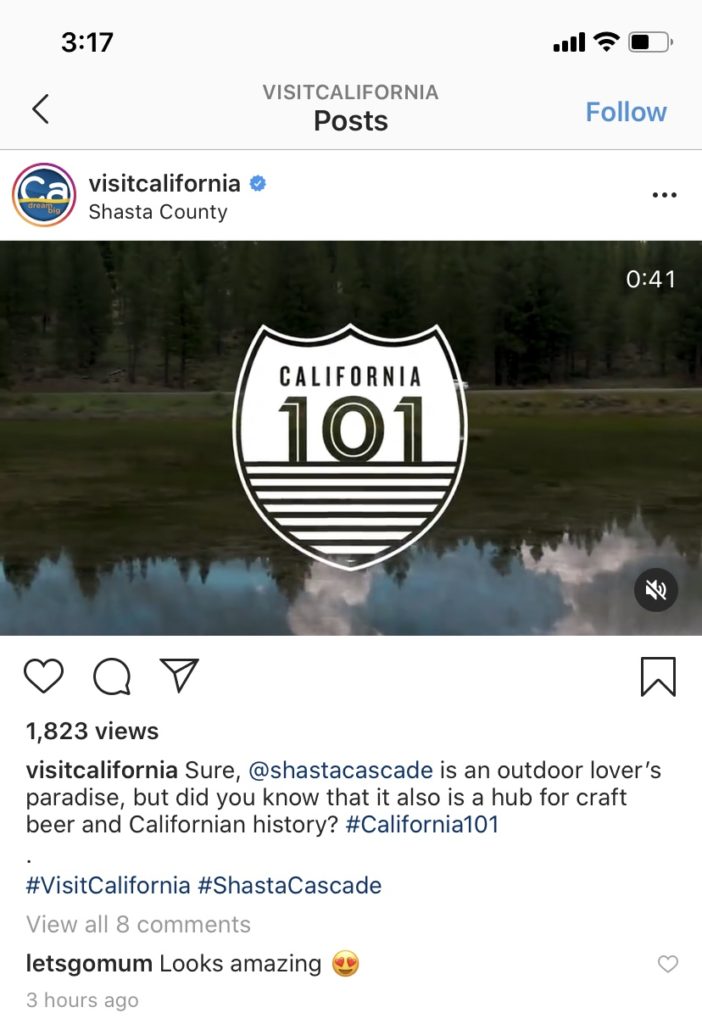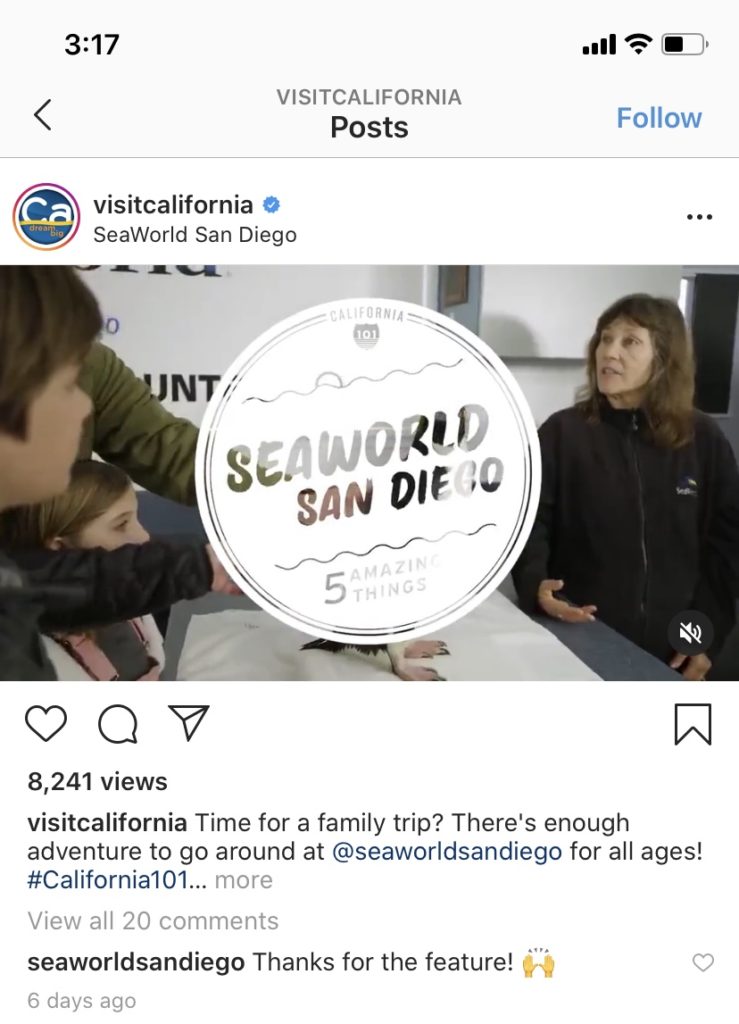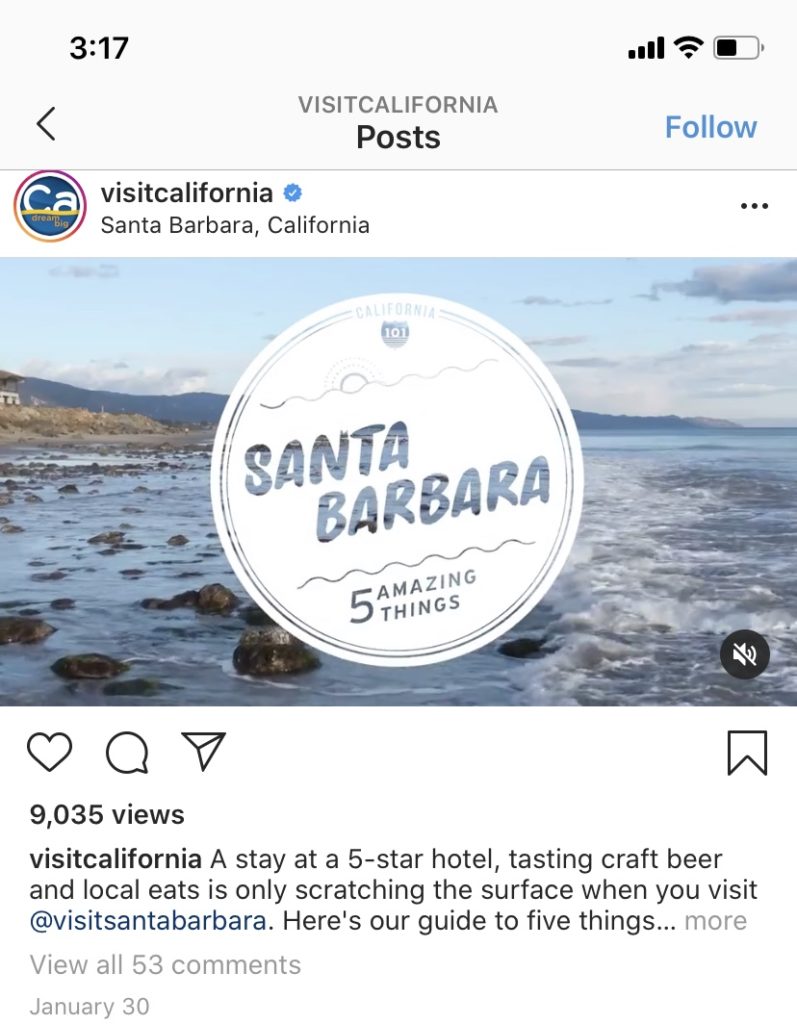Places have personality.
Try this: compare the perceptions and emotions you have towards places that you like to visit against those you have towards the products you buy or the services you use. Do you have a bit more affinity towards your next vacation destination than your next pair of shoes? Places may in fact be some of the most important brands in a consumer’s life.
Tuck that thought away. We’ll come back to it.
Successful tourism marketing relies on a few key ingredients in the age of social media:
- First, it requires an ongoing stream of new, high-quality user-generated content (UGC) to pull from. Whether that is coming from hashtag usage or location tags, this is both the lifeline of any successful social media strategy and the clearest sign that there is an engaged audience online warranting further investment in social media marketing.
- Next, destinations must leverage Influencers and Press trips to create specific types of content, visit specific locations that the typical traveler may overlook, and spread the word about the destination to new audiences.
- Finally, with a constant stream of content coming in from travelers, residents, and strategic influencers, tourism boards are able to post about all the places, events, and storylines in your marketing plan.
While executing this is of course harder than it sounds, do you see the problem here?
Everything relies on content, and the production of this content is largely out of the destination’s control. (This is not unique to the tourism industry, but that’s where we’ll focus today.)
UGC is totally outside of a brand’s creative control, for obvious reasons. And even if Influencers or Press trips have a strict itinerary and perfectly crafted experiences to take part in, the content they are shooting, writing, publishing, and sharing is still coming through the lens of their brand (in the case of an Influencer) or the voice of their publication (in the case of Press). While that is a crucial part of the success of those partnerships, it doesn’t give the destination the chance to speak for itself. These two streams of content are not enough.
Places have a personality, but most tourism boards don’t let those personalities come through.
So, while these ingredients are key parts of any social media strategy, they don’t give you all the control you should have over your messaging.
The most effective destination marketers have already added another ingredient into the mix; they are producing their own content that aligns stylistically with the UCG and influencer content users are used to seeing. Here are some examples of this in the wild.
TOURISM IRELAND:
A leader in this space, Tourism Ireland has been at the forefront of social media marketing for years. There current brand hashtag, #loveireland, has a strong presence with 658,000 tags on Instagram and lots of very high-quality content. And having worked with some of the biggest names in the influencer space (like @bokehm0n, @lilyrose, and @thechrishau to name a few) they’re working in owned photography to feature the places that UGC and influencers just haven’t delivered on yet.
Take the screenshot below, can you find the owned photos?
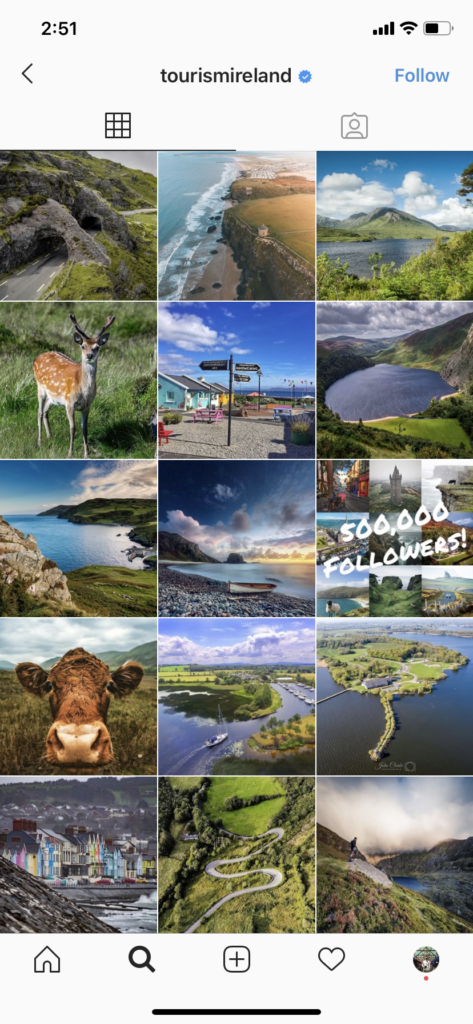
We’ll help you out:
While all the other photos credit a the user who took the imagery (best practice when using UCG or influencer-contributed content), these posts don’t contain photo credit. That’s our hint that they are owned content.
Taken all together, you can see that the same photographer probably took these images pretty close together, but scattered amongst the feed they enable the brand to feature the places they want to, when they want to, regardless of whether a recent influencer trip included that destination. And no endless scrolling through the UGC means that the social team has more time to engage with the community. A few owned assets mixed into the publication schedule makes for a more efficient strategy overall.
VISIT CALIFORNIA
VisitCalifornia takes things a bit further and has been relaying pretty heavily on branded videos in their feed lately. Branded animations and content series (like the #California 101 posts you see below) set the expectation with the viewer that they are going to see high-quality content and that if they follow the account, they see more of it in the future.
While Tourism Ireland’s tactic allows it to casually insert imagery about destinations it wants included in its social promotion, what Visit California is doing allows it to draw a lot of attention to exactly the locations, experiences, and messaging that it wants to. For high profile events, seasonal features, or important local partners, this is a way to ensure that the content going out is just right and keeps all parties happy, without relying on sourcing UGC to hit all the right notes or boxing in an influencer with a restrictive brief. When supplemental video assets let the brand tell it’s key storylines in line with exciting UGC and high quality influencer activations, a destination is primed for serious growth and expansion into new audiences.
PURE NEW ZEALAND
Always ahead of the curve, Pure New Zealand shows us the exception to this rule. Every now and then they’ll post a contributed photo, whether from an influencer or UGC, but for the last 235 days they’ve mostly posted owned video content as part of their Good Morning World campaign on their main Instagram account.
The video below sets the mood for the campaign. And after a million views, we’d say it made for a pretty effective launch.
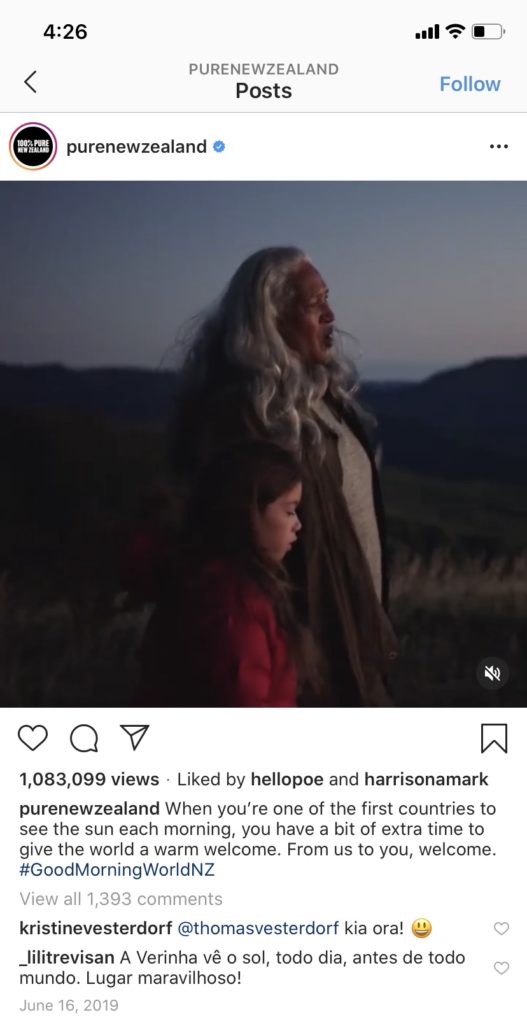
Then, with the video for Day 1 of the series, we see the format they’ve stuck to ever since.
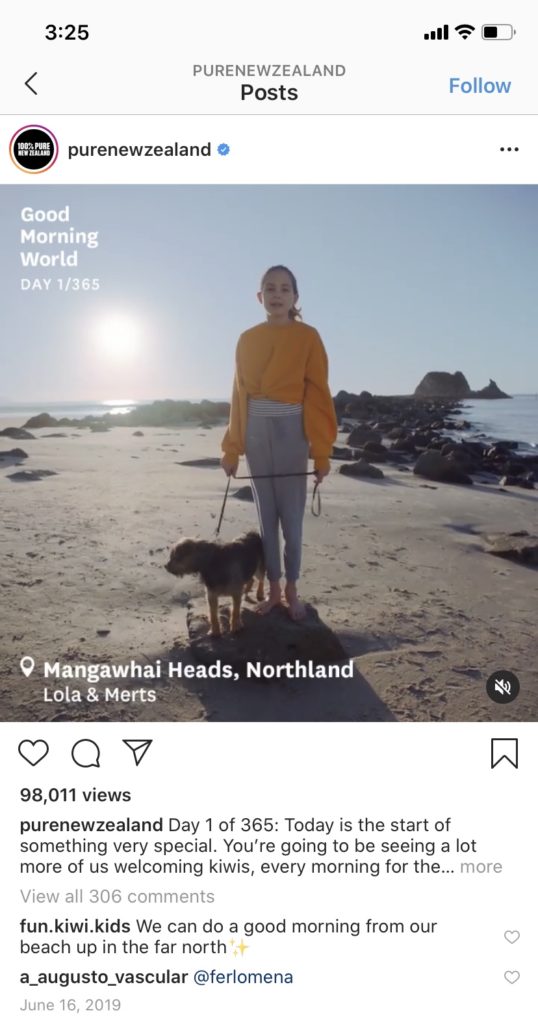
With over 1.3 million instances of their #NZMustDo hashtag, they don’t need to produce their own content to have something high quality to post. But the Good Morning World campaign goes to show that what works best on social media is simply good content, well executed, that aligns with the medium. Waking up to a new message from a beautiful place like New Zealand each morning? That’s a great use of Instagram.
The rules we outlined above are what have worked in the past for destination marketers, but Pure New Zealand is an example of new and innovative ways to push these mediums to the next level. As social platforms and the audiences on them continue to evolve, so will the strategies we see gaining traction. But, one thing that will never change is the need to have the content at your fingertips to activate that strategy.
Without the content or the means to produce it, even the best tourism marketing strategies die on the whiteboard.
Contact us today to start creating the content you need to reach your goals.
Back
